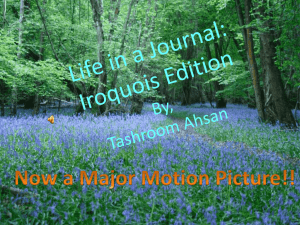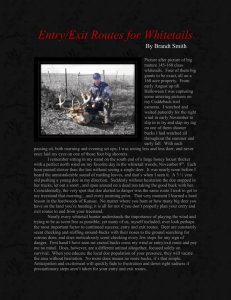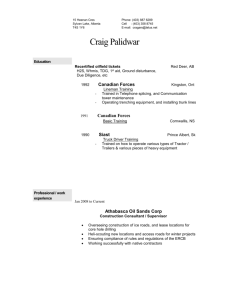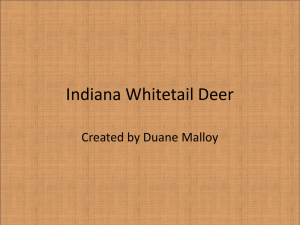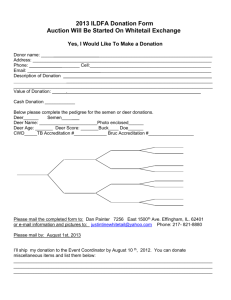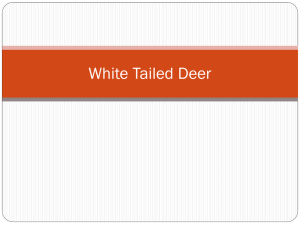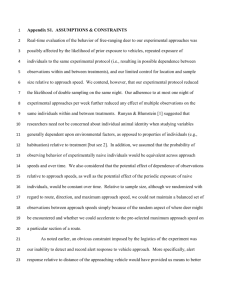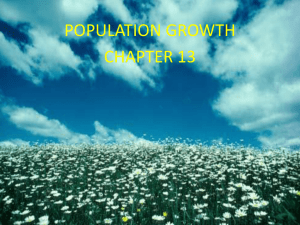Winter Ranges
advertisement
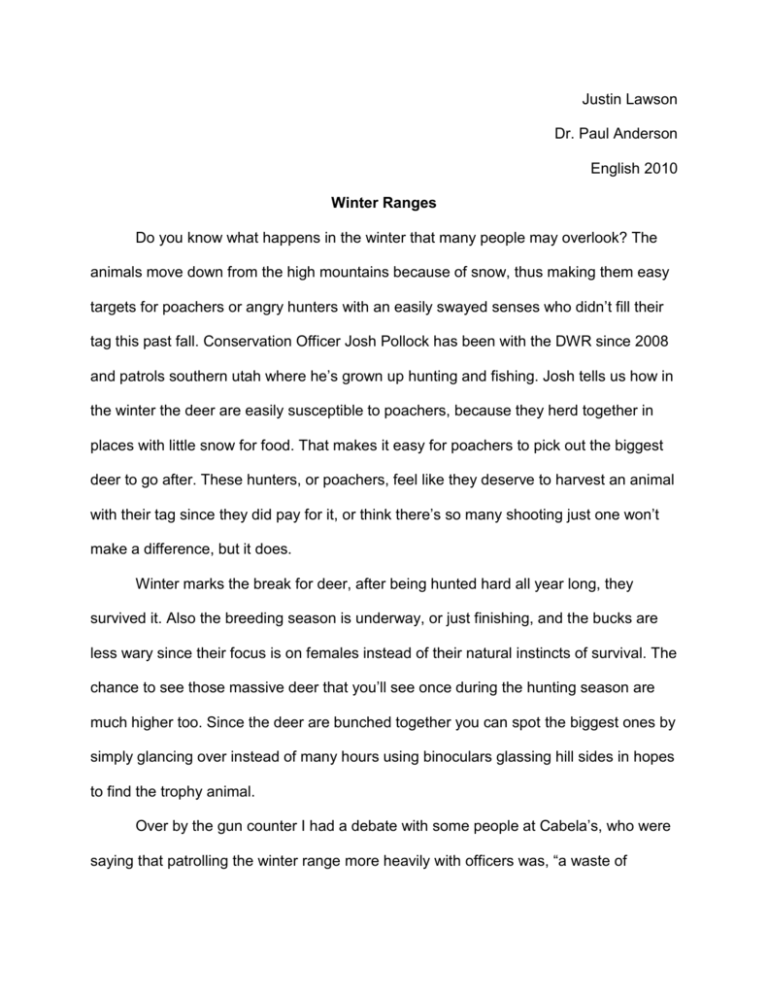
Justin Lawson Dr. Paul Anderson English 2010 Winter Ranges Do you know what happens in the winter that many people may overlook? The animals move down from the high mountains because of snow, thus making them easy targets for poachers or angry hunters with an easily swayed senses who didn’t fill their tag this past fall. Conservation Officer Josh Pollock has been with the DWR since 2008 and patrols southern utah where he’s grown up hunting and fishing. Josh tells us how in the winter the deer are easily susceptible to poachers, because they herd together in places with little snow for food. That makes it easy for poachers to pick out the biggest deer to go after. These hunters, or poachers, feel like they deserve to harvest an animal with their tag since they did pay for it, or think there’s so many shooting just one won’t make a difference, but it does. Winter marks the break for deer, after being hunted hard all year long, they survived it. Also the breeding season is underway, or just finishing, and the bucks are less wary since their focus is on females instead of their natural instincts of survival. The chance to see those massive deer that you’ll see once during the hunting season are much higher too. Since the deer are bunched together you can spot the biggest ones by simply glancing over instead of many hours using binoculars glassing hill sides in hopes to find the trophy animal. Over by the gun counter I had a debate with some people at Cabela’s, who were saying that patrolling the winter range more heavily with officers was, “a waste of money, money that could be used for so many more things.” All I had to say to that was, “Do you enjoy hunting? Because if poaching continues to grow hunting permits will be harder to come by.” If you think that more officers patrolling the winter ranges to protect our fragile ecosystem is a bad use of money i’d like to know what they think is a good use. With more officers, the odds of catching the ones who continue to shoot animals out of season go up, knowing that there are many more officers will hopefully diminish the will of the easily willed hunters to shoot out of season. Poaching is; Illegally hunting or catching (game or fish) on land that is not one's own or is under official protection. When deer winter low there’s always pro’s and con’s to it, a Con is that they draw so much attention to the public, causing damages to property such as flowers or plants and being struck by vehicles. A pro however, “In December, the deer are bunched together on lower elevation areas where it’s easier to get an accurate count” said Fowlks. He goes on to say, “But if poachers kill bucks after the biologists have counted them, the data that’s used to set the permit numbers for hunts next fall won’t be correct. That can result in too many permits being issued.” Poaching can potentially be a double edge sword, if they kill animals after the count causing too many permits to be given and the legal hunters harvest theirs. Its twice as many deer being taken out then intended to, and after years of that, we could have a big problem. So far, 107 killings of mule deer were investigated, and thats just from the start of September to the end of November. That isn’t even the easiest time to spot deer, if there’s been that many cases in the fall could you imagine what the winter has in store? That’s why the DWR has put a massive patrol effort in this winter, with twice the amount of patrolling officers it should be much harder and riskier to illegally kill a deer in Utah. Some tactics they’re trying are; patrolling both during the day and also at night, and not only from the ground but also the air. With both eyes and ears on the ground and the air, it should help out with what can’t be seen from roadways and trails. Saturation patrols are another thing they’re doing, and thats putting more officers in the same area at the same time. So doubling the officers on the range to assist the usual officers who patrol said area will increase the area covered daily. The biggest help to them is the volunteers from sportsmen's groups to report activity and and other suspicious events to officers. This extra help will continue until later this month and the first of february, just until the bucks shed their antlers. It makes sense, most the deer that get poached are trophy bucks or just bucks in general, so once they shed their antlers it takes the trophy out of the equation and turns more into a thrill to kill poacher. Basically with the publics help, the DWR wouldn’t have to use so much extra work. This article showed the actions they’ve taken to resolve a growing issue that could be easily averted with the publics help. I wish it was printed in papers and put on the news to reach more people, the only people that are going to read it are the ones who get on the Division of Wildlife Utah’s page and see it under the “News” section. If this was made more public it could have a big effect in the number of onlookers to help.

